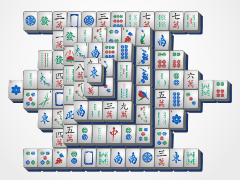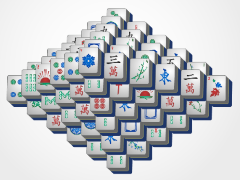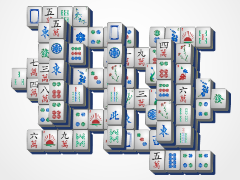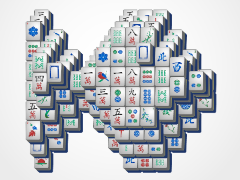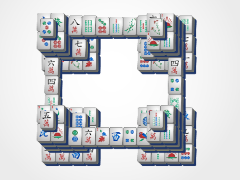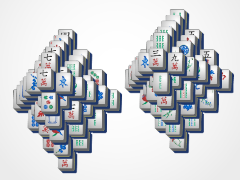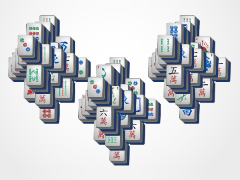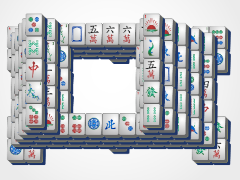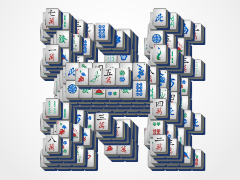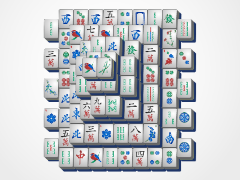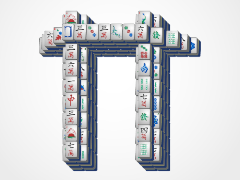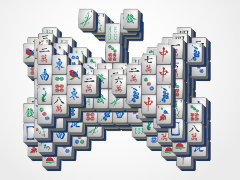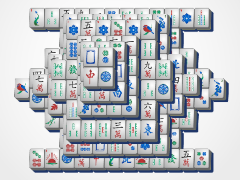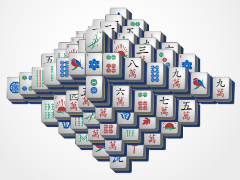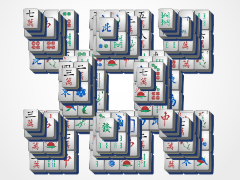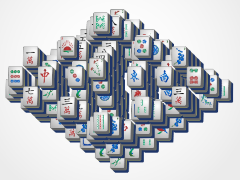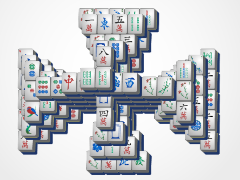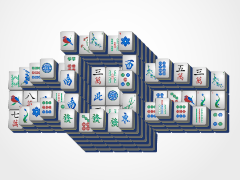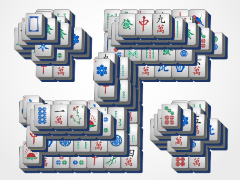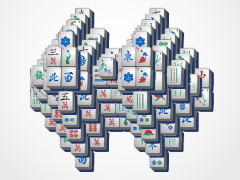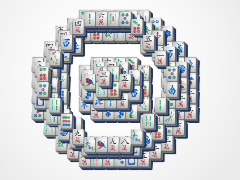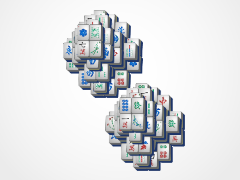How Long Does Mahjong Take? A Quick Guide to Game Duration
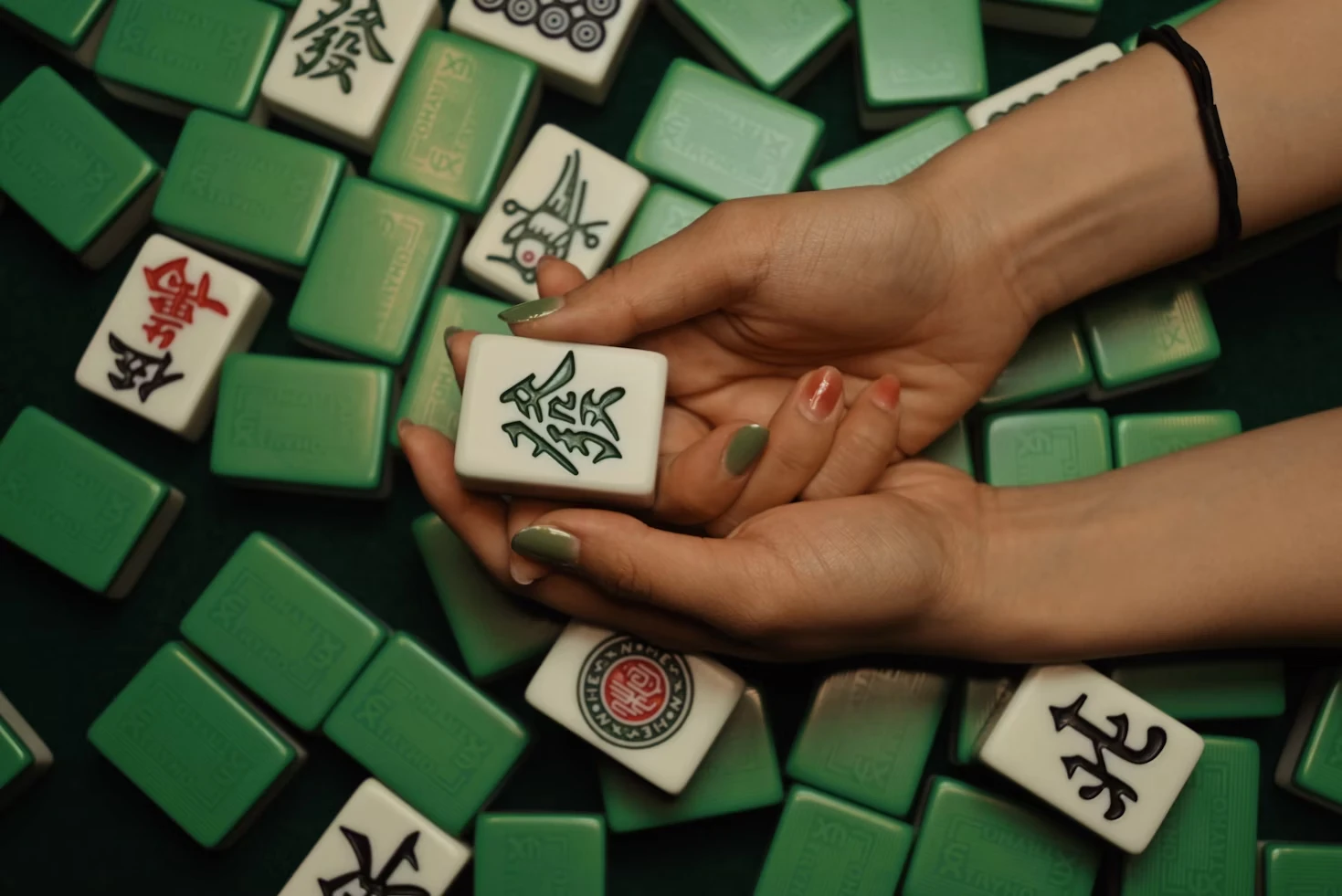
Mahjong, often played as the digital version known as mahjong solitaire, is a captivating tile-matching game that blends strategy, concentration, and relaxation. With its origins rooted in traditional Chinese tile games, mahjong solitaire takes a simplified yet challenging approach, offering players a mental workout that's as enjoyable as it is engaging.
The game involves clearing a board of 144 intricately designed tiles by matching pairs, following specific rules that require logical thinking and foresight. Whether you're a beginner or a seasoned player, mahjong offers a versatile gaming experience that can be tailored to your preferences. You can breeze through quick games to sharpen your pattern-recognition skills or take your time exploring complex layouts for a more immersive challenge.
This post covers the mechanics of mahjong, factors that influence gameplay, and strategies to either speed up or savor your sessions. Let's take a look at how this timeless game can enrich your leisure time.
Understanding Mahjong Game Mechanics
Mahjong, often referred to as mahjong solitaire when played digitally, is a tile-based game where players match pairs of tiles to clear the board. The game consists of 144 tiles arranged in a layered structure, with each tile bearing unique designs, such as Chinese characters, symbols, and images of flowers and seasons. The goal is to match and remove pairs of free tiles–those not blocked by other tiles on either side or on top.
The simplicity of matching tiles contrasts with the strategic depth required to clear the board. Players must plan their moves carefully, avoiding matches that could leave critical tiles buried. As the game progresses, fewer tiles remain, increasing the difficulty of finding matches. Understanding these mechanics is key to mastering mahjong.
The Rules of Mahjong
The rules of mahjong solitaire are straightforward. Players must locate and match pairs of identical tiles to remove them from the board. However, only tiles that are free can be matched. A tile is considered free if there are no other tiles directly on top of it and if at least one of its sides (left or right) is open.
If no more matches are available, players may reshuffle the remaining tiles in digital versions of the game. The objective is to clear the entire board, and success often requires careful planning and strategic thinking to avoid running out of matches.
What Are the Tiles Called?
Mahjong tiles are divided into several categories, each with unique designs and purposes. These include:
- Suit tiles: Divided into Bamboo, Characters, and Circles, each numbered 1 through 9.
- Honor tiles: Includes Wind tiles (East, South, West, North) and Dragon tiles (Red, Green, White).
- Bonus tiles: Comprising Flower and Season tiles, these often add variety and complexity to the game but don't require matching pairs in traditional play.
Understanding the distinct categories and their appearances is important for efficient gameplay, as recognizing tiles quickly is key to success.
Factors That Influence Game Duration
The length of a mahjong game can vary widely based on several factors. First and foremost is the layout complexity. Some configurations, like the classic "turtle" layout, have multiple layers and intricate arrangements, which naturally take longer to solve than simpler patterns. Other layouts, such as the "pyramid" or "square," may provide fewer layers and therefore shorter playtimes.
The player's experience level also plays a significant role. A seasoned player familiar with tile designs and strategic moves can navigate even complex layouts faster than a beginner. In contrast, new players may take additional time to understand the rules and recognize tile patterns.
Another critical factor is the availability of matches. In some games, matches are abundant early on, speeding up progress. However, as the board clears, matches may become scarce, requiring more time to locate or reshuffle tiles. Additionally, time spent strategizing can add to the game's duration. Players who prefer to think through every move rather than acting quickly will experience longer games. Digital versions of mahjong solitaire may also include features like timers or hints, which can influence the overall pace of play.
External Factors
Outside factors can also affect game duration. For example, interruptions or distractions may cause a player to lose focus, extending the time needed to complete a game. Additionally, playing on different devices, such as a phone versus a tablet, may impact how quickly tiles are selected and matched.
Summary of Influencing Factors
- Layout complexity: More layers and intricate designs increase playtime.
- Player experience: Skilled players complete games faster.
- Availability of matches: Scarce matches slow down progress.
- Strategizing: Taking time to plan extends the duration.
- External factors: Distractions and device type can also influence game length.
To conclude, mahjong game duration depends on several factors, including layout complexity, player experience, and availability of matches. Complex layouts with multiple layers, like the turtle configuration, naturally take more time to solve. Beginners may also require longer sessions as they familiarize themselves with rules and tile patterns.
As matches become scarcer in later stages, players often spend extra time strategizing or reshuffling tiles. External distractions, device type, and gameplay preferences further influence how long it takes to complete a game. Understanding these elements can help players manage their time and adapt their approach for a more satisfying experience.
Tips for Speeding Up Mahjong Games
Speed is a key aspect of mahjong for players who enjoy a fast-paced challenge. Improving your game speed requires a mix of practice, strategy, and familiarity with tile patterns. By learning how to recognize matches quickly, focus on critical moves, and adopt efficient techniques, you can significantly reduce your game time while improving your overall skills. Below are practical tips to help you play faster and more confidently.
Familiarize Yourself with Tile Patterns
Learning to recognize tile designs quickly is essential for faster gameplay. Spend time studying the different types of tiles, especially those with similar appearances, such as the Bamboo and Circle suits. For example, distinguishing between the Bamboo 2 and Bamboo 3 tiles at a glance can save valuable seconds during play. Practice identifying tiles through repetition to build muscle memory and visual familiarity.
Prioritize Unblocking Key Tiles
Focus on freeing tiles that are buried beneath multiple layers or those that unlock new areas of the board. For example, if a tile on the top layer is blocking multiple tiles underneath, matching it first will open more possibilities. Prioritizing critical tiles ensures that you maintain flexibility and avoid situations where matches become unavailable later in the game.
Use Hints Sparingly
Many digital versions of mahjong solitaire offer hint features to highlight potential matches. While these can be helpful in difficult moments, relying on them too often can hinder your ability to improve. Instead, challenge yourself to find matches independently, using hints only as a last resort. This approach encourages skill development and faster recognition over time.
Play Mahjong Regularly
Regular practice is one of the most effective ways to improve speed. By solving at least one puzzle daily, you'll develop stronger pattern recognition and decision-making skills. For instance, consistent play helps you anticipate which moves will open the most opportunities, leading to more efficient gameplay. Over time, this habit will translate into faster and more confident performance.
Adjust the Difficulty
Start with simpler layouts to build confidence and speed before progressing to more challenging configurations. For example, the "pyramid" layout may serve as a good starting point due to its straightforward structure, while the "turtle" layout provides a greater challenge. Gradually increasing the difficulty allows you to refine your skills without becoming overwhelmed.
Develop a Scanning Strategy
Adopt a systematic approach to scanning the board for matches. For example, scan each layer horizontally and vertically before moving on to the next layer. This method ensures you don't overlook potential matches and allows you to clear tiles more efficiently.
Use the Undo Option Strategically
In digital versions, the undo feature can be a valuable tool for reviewing previous moves and identifying better strategies. If a match doesn't yield the expected results, use undo to reassess and try a different approach.
Practice Timed Games
Challenge yourself with timed versions of mahjong solitaire to improve your speed under pressure. Timed games encourage faster decision-making and help you build the ability to spot matches quickly without second-guessing.
By incorporating these tips into your mahjong routine, you'll not only improve your speed but also sharpen your problem-solving skills and decision-making under pressure. Whether it's mastering tile patterns, refining your scanning strategy, or practicing with timed games, these methods can help you tackle even the most challenging layouts with efficiency. Start applying these strategies today to transform your mahjong sessions into a quicker and more exhilarating experience.
Strategies for Prolonging Mahjong Sessions
Mahjong isn't just about speed–it's also a game that rewards patience and exploration. For players who prefer a more immersive and relaxing experience, there are several ways to extend the length of your game. By tweaking your approach and experimenting with different strategies, you can savor every moment and make the game more rewarding. Below, we explore how to create longer, more engaging sessions.
Select Complex Layouts
If you enjoy longer games, choose configurations with more layers or intricate designs. Layouts like the "turtle" or "dragon" have multiple overlapping tiles, which naturally take more time to solve. These complex arrangements provide a more immersive and rewarding experience for players who prefer a slower pace.
Avoid Immediate Matches
Resist the urge to match the first pair of tiles you see. Instead, take a moment to survey the entire board and plan your moves. By leaving key tiles untouched, you can preserve flexibility and ensure that options remain available as the game progresses. For instance, avoid matching two free tiles if doing so won't open up new areas of the board.
Experiment with New Strategies
Challenge yourself to adopt different approaches to gameplay. For example, focus on clearing specific tile categories, such as Bamboo tiles, before moving on to others. Alternatively, work methodically from the top layer down, ensuring that each move contributes to your overall progress. Experimentation can make the game more engaging and prolong your playtime.
Play Without Hints
Turning off hints or assistance features increases the challenge and forces you to rely entirely on your skills. This added difficulty encourages careful planning and strategic thinking, resulting in longer and more satisfying gameplay sessions. It also helps improve your problem-solving abilities over time.
Embrace Relaxation
Mahjong can be a calming and meditative activity when played at a leisurely pace. Focus on the enjoyment of matching tiles and uncovering hidden layers rather than rushing to complete the board. Use the game as an opportunity to unwind and immerse yourself in the process, turning it into a soothing mental escape.
Set Personal Goals
Extend your game by creating personal challenges, such as clearing specific tile types first or solving the board without reshuffling. These goals add layers of complexity and make each session feel unique.
Play Larger Boards
Select game variations that use more tiles or larger layouts. Bigger boards naturally require more time to complete, allowing you to enjoy an extended session with added layers of strategy.
Prolonging a mahjong session allows you to enjoy the game at a slower pace, focusing on strategy, relaxation, and the thrill of uncovering hidden layers. By selecting more complex layouts, setting personal challenges, or simply playing larger boards, you can tailor the experience to your liking. Whether for relaxation or honing your strategic skills, these methods ensure every session feels unique and fulfilling.
Final Words
Mahjong, with its engaging mechanics and versatile play styles, offers something for everyone. Whether you're aiming to speed up your games or prolong them for a relaxing session, the strategies above can help you tailor your experience to your preferences. By mastering the art of matching tiles and developing your approach, you can enjoy this timeless game in ways that suit your mood and goals.
Looking for the perfect place to play? Visit Mahjong 247 for a wide variety of layouts and challenges. Whether you're a beginner or an expert, this platform has everything you need to sharpen your skills and enjoy hours of fun.
247 Mahjong Puzzles
Seasonal Mahjong Games
More Games
Mahjong News
Disclaimer
DISCLAIMER: The games on this website are using PLAY (fake) money. No payouts will be awarded, there are no "winnings", as all games represented by 247 Games LLC are free to play. Play strictly for fun.

